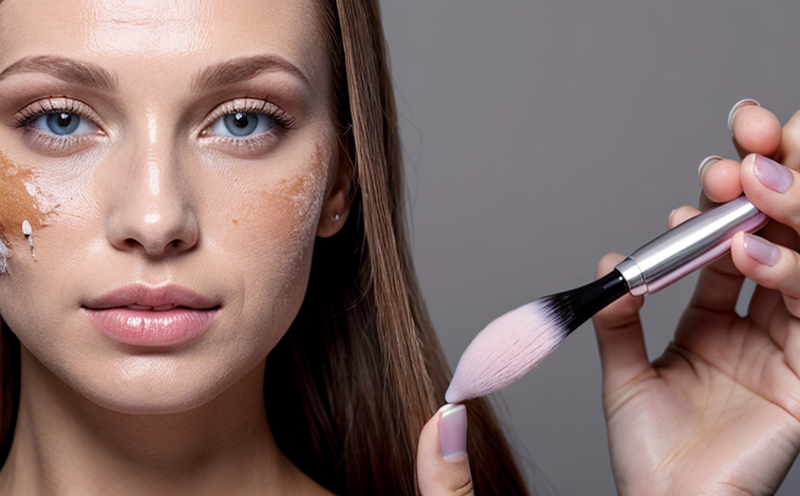Claims Substantiation Testing in Cosmetic Marketing
In today’s competitive market, substantiating claims made on cosmetic products is crucial. Consumers are increasingly seeking transparency and evidence that supports the efficacy or safety of the products they purchase. This section explains how Claims Substantiation Testing plays a pivotal role in ensuring compliance with regulatory requirements while building consumer trust.
Claims about ingredients, benefits, safety, and performance must be scientifically supported. Regulatory bodies such as the FDA (Food and Drug Administration) in the US and EMA (European Medicines Agency) require that these claims are substantiated by credible scientific evidence. This testing ensures that marketing materials do not mislead consumers or make unsupported promises about a product's capabilities.
The process involves several steps, including identifying the claim to be tested, gathering relevant scientific literature and data, conducting experiments under controlled conditions, analyzing results, and finally preparing a report that supports the claims being made. This detailed approach ensures that any marketing materials are accurate and reliable, thus protecting both the consumer and the brand.
Let’s delve deeper into how this testing works. First, it is essential to identify the specific claim you wish to substantiate. For instance, if a product promises to enhance skin hydration, then tests would focus on measuring changes in water content of the skin after using the product. Next, gathering appropriate literature and data provides context for your test results.
Once identified, the sample must be prepared according to standard protocols provided by relevant standards like ISO or ASTM. Specimens need careful preparation; this might involve applying a product under specific conditions (temperature, humidity) over defined periods before measurement can occur. The choice of instrumentation is critical here too – spectrophotometers, chromatographs, etc., may come into play depending on what aspect of the claim you are verifying.
| Standard | Description |
|---|---|
| ISO 21778:2015 | Standard for evaluating the efficacy of cosmetic products in improving skin hydration. |
| ASTM D3941-16a | American Society for Testing Materials standard for determining the moisture content of cosmetics and toiletries. |
The testing itself often involves multiple steps, which could include applying the product to controlled environments and monitoring changes over time. For example, in assessing anti-aging properties, researchers might measure wrinkle depth before and after using the product for several weeks.
After collecting all necessary data points, it is crucial to analyze them thoroughly. This step ensures that any observed effects are statistically significant and not due to random variation or other variables. Once satisfied with the results, they should be compiled into a comprehensive report detailing how the claim was substantiated based on scientific evidence.
This rigorous process helps brands avoid legal issues associated with false advertising while also enhancing their reputation among consumers who value authenticity in beauty products. It’s important to note that this isn’t just about meeting compliance requirements; it's an opportunity to differentiate your brand positively by providing tangible proof of product efficacy and safety.
Applied Standards
- ISO 21778:2015: This international standard provides guidelines for evaluating the efficacy of cosmetic products in improving skin hydration. It specifies methods for measuring changes in water content within the stratum corneum and deeper layers of the epidermis.
- ASTM D3941-16a: Developed by ASTM International, this standard outlines procedures for determining the moisture content of cosmetics and toiletries. It covers both direct gravimetric methods and indirect techniques using refractometers or Karl Fischer titrations.
Why Choose This Test
- Promotes trustworthiness: Scientifically backed claims foster consumer confidence and loyalty.
- Avoids legal risks: Compliance with regulatory standards protects brands from potential lawsuits related to false advertising.
- Differentiates products: Demonstrating tangible benefits through tested data can set your product apart in crowded markets.
- Enhances brand reputation: Transparency regarding product performance and safety contributes positively to overall image.
Competitive Advantage and Market Impact
The ability to substantiate claims through rigorous testing offers several advantages. Brands that can prove their products deliver on promised benefits enjoy increased brand loyalty, repeat purchases, and higher customer satisfaction scores. Furthermore, such practices help establish credibility in the eyes of regulators and industry peers.
By adhering strictly to regulatory guidelines like those outlined by ISO 21778:2015 or ASTM D3941-16a, companies demonstrate their commitment to quality assurance. This not only helps maintain compliance but also sets a benchmark for competitors who may follow suit.
Moreover, successful claim substantiation can lead to enhanced market presence by attracting new customers looking for reliable information about product performance and safety. It also opens doors for partnerships with other reputable brands or institutions recognizing genuine innovation in the field of cosmetics.





